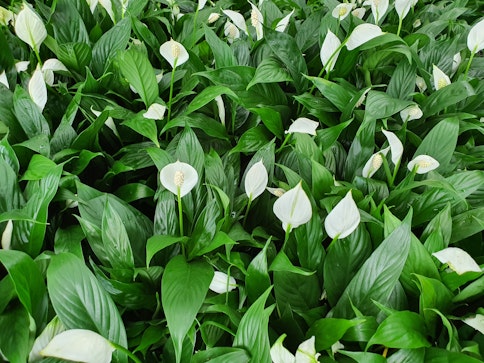
- Home
- Zamioculcas: General Care

What is a Zamioculcas?
Zamioculcas is a genus of flowering plants in the family Araceae containing one single species: Zamioculcas zamiifolia: commonly known as the ‘ZZ Plant’. They grow terrestrially and are native to most nations in East Africa. They are prized for their unique and characteristic shape as well as their tolerance of lower-light conditions and minimal care needs.
Care:
Zamioculcas zamiifolia doesn’t require much difficult care, and is a really great way to liven up your space, as they are hardy and resistant to most regular issues.
Watering: Keep the soil temperately damp but never soaking wet. They are somewhat drought tolerant and are able to store lots of water in their chunky stems, but will suffer from over-watering, so it is best to water little in small amounts in order to achieve the right conditions. Be sure to make adjustments based on your light conditions and potting mix. In the winter, ZZ in the UK will enter dormancy, and watering should be reduced to as little as possible to compensate. While it is a member of the Araceae family, it does not necessarily enjoy the high humidity like its cousins.
Potting: Z. zamiifolia likes well draining soils. A chunky mix of coir, perlite and pine bark would be an ideal mix, as the perlite and bark stop clumping and allow water to drain through, and the bark will store excess water and allow access to stored water if ever the soil is too dry.
Light: Being a forest-floor grower in the wild, Z. zamiifolia generally does not require huge amounts of sunlight in order to grow successfully. In fact, direct sunlight would be far too much for it. Instead, medium to bright-indirect light is recommended for ideal growing conditions! Z. zamiifolia is commonly sold as a ‘low-light’ plant, and while they do have the ability to survive for a long time in reduced light conditions, their growth will be etiolated, leggy and likely start twisting towards brighter areas without a necessary amount.
Feeding: It is best to feed Z. zamiifolia when it is exhibiting periods of active growth, to help to strengthen the new growth. Its leaves get very vivid nutrient burn if overfed, so it is best to feed only when needed. During dormancy it is recommended not to feed at all, and allow the plant to rest.
Pests: Z. zamiifolia are particularly susceptible to mealybug invasions and the stems can also be a nice feeding ground for scale insects and spider mites! Keep your eyes out for warning signs and if discovered, treat accordingly.
Things to look out for in Z. zamiifolia:
Lack of Light: Often, when under insufficient light, Z. zamiifolia can grow long, thin stems in unusual directions with drastically spaced out leaves. This is typically a sign of etiolation, or a lack of light. If this is the case, move the plant to a brighter spot and new growth will come out as intended.
Yellow leaves: This can indicate multiple things. As a general rule, if there is new growth but old, smaller leaves are yellowing, this is just a natural process of prioritizing more productive foliage. If the yellowing is widespread, then the likelihood is there is a more sinister problem, such as: overwatering, drought, pests or nutrient burn.
Spent leaves: As a fast grower, Z. zamiifolia has adapted for its strongest and most productive leaves to stand tall, while its old, unproductive leaves yellow and drop off. After a while, these spent leaves can build up and look a little ugly. Their presence is not indicative of any overall stress or problem, but simply removing them can greatly improve the plants appearance and allow them to redirect that energy to the more productive parts of themselves. Further, the presence of dead leaves in the soil can encourage bacteria and fungus to grow, so it is best to remove them!
Jonathan Davies
Jonny has worked at Root since May 2023. His love for plants was inherited initially from his grandparents and parents, but really took off once he moved into his own place, where he started picking up small plants and was fascinated by watching how they grow and change over time. Jonny has a degree in Archaeology and Classics from the University of Sheffield, and a masters in Egyptology from Swansea University, where he primarily focused on garden culture in the ancient world, which he has managed to extend to a PhD thesis in the University of Liverpool, where he has been able to combine his love for plants with his love for ancient language and culture. Jonny loves being in the natural spaces around North Wales and Cheshire where he used to go growing up, and often spends hours examining the plants and trees, and kicking up the leaf litter searching for mushrooms and insects. He is fascinated most by plant biology, taxonomy and learning about ecosystems and interactions between plants and their environmental counterparts, and enjoys tending to his varied array of houseplants, and ongoing ‘plant projects’, such as growing plants from seeds and creating living epiphyte displays. Aside from his green thumb, his other interests include: art, reading, listening to and playing music in the company of his cats, Spooky and Boo.
More by Jonathan DaviesRelated Articles
View all articles




